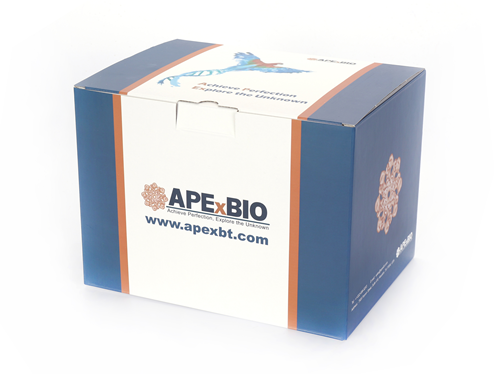Recombinant Human Secreted Protein Acidic and Rich in Cysteine, His
Secreted protein acidic and rich in cysteine (SPARC), also named as osteonectin or BM-40, is an acronym for “secreted protein, acidic and rich in cysteine”. It is encoded by the SPARC gene in humans. The protein is a glycoprotein of 40 kDa, (303 amino acid residues) and consists of 17 a.a. signal sequence, an N-terminal acidic region that binds calcium, a follistatin domain containing Kazal-like sequences, and a C-terminal extracellular calcium (EC) binding domain with two EF-hand motifs. SPARC is the founding member of a family of secreted matricellular proteins with similar domain structure. It is produced by fibroblasts, capillary endothelial cells, platelets and macrophages, especially in areas of tissue morphogenesis and remodeling. SPARC is required for the collagen in bone to become calcified but is also involved in extracellular matrix synthesis and promotion of changes to cell shape. The gene product has been associated with tumor suppression but has also been correlated with metastasis based on changes to cell shape which can promote tumor cell invasion.
Reference
1. Sage H, Decker J, Funk S, et al. 1989. J Mol Cell Cardiol, 21 Suppl 1: 13-22
2. Kanauchi M, Nishioka M, Dohi K. 2000. Diabetologia, 43: 1076-7
3. Lau CP, Poon RT, Cheung ST, et al. 2006. J Pathol, 210: 459-68
4. Rodriguez-Jimenez FJ, Caldes T, Iniesta P, et al. 2007. Oncol Rep, 17: 1301-7
5. Wong SY, Crowley D, Bronson RT, et al. 2008. Clin Exp Metastasis, 25: 109-18.
| Gene ID | 6678 |
| Accession # | P09486 |
| Alternate Names | Basement-membrane Protein 40, BM-40, Osteonectin, ON |
| Source | Escherichia coli. |
| M.Wt | Approximately 36.1 kDa, a single non-glycosylated polypeptide chain containing 314 amino acids, with expression vector sequence (containing 6 × His tag). |
| AA Sequence | MSYYHHHHHH DYDIPTTENL YFQGAMGSAP QQEALPDETE VVEETVAEVT EVSVGANPVQ VEVGEFDDGA EETEEEVVAE NPCQNHHCKH GKVCELDENN TPMCVCQDPT SCPAPIGEFE KVCSNDNKTF DSSCHFFATK CTLEGTKKGH KLHLDYIGPC KYIPPCLDSE LTEFPLRMRD WLKNVLVTLY ERDEDNNLLT EKQKLRVKKI HENEKRLEAG D |
| Appearance | Sterile Filtered White lyophilized (freeze-dried) powder. |
| Stability & Storage | Use a manual defrost freezer and avoid repeated freeze-thaw cycles. - 12 months from date of receipt, -20 to -70 °C as supplied. - 1 month, 2 to 8 °C under sterile conditions after reconstitution. - 3 months, -20 to -70 °C under sterile conditions after reconstitution. |
| Formulation | Lyophilized from a 0.2 μm filtered concentrated solution in PBS, pH 7.4. |
| Reconstitution | We recommend that this vial be briefly centrifuged prior to opening to bring the contents to the bottom. Reconstitute in sterile distilled water or aqueous buffer containing 0.1 % BSA to a concentration of 0.1-1.0 mg/mL. Stock solutions should be apportioned into working aliquots and stored at ≤ -20 °C. Further dilutions should be made in appropriate buffered solutions. |
| Biological Activity | Fully biologically active when compared to standard. The ED50 as determined by its ability to inhibit the cell growth of Mv1Lu mink lung epithelial cells is less than 3.0 μg/mL, corresponding to a specific activity of > 333 IU/mg. |
| Shipping Condition | Gel pack. |
| Handling | Centrifuge the vial prior to opening. |
| Usage | For Research Use Only! Not to be used in humans. |
Quality Control & DataSheet
- View current batch:
-
Purity > 95 % by SDS-PAGE and HPLC analyses.
- Datasheet
Endotoxin: Less than 1 EU/μg of rHuSPARC, His as determined by LAL method.








